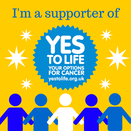
Bioidentical Hormone Replacement Therapy
bHRT provides hormones that are 100% identical in chemical structure to those found in the human body. The term bioidentical should not be considered the same or used interchangeably with either “natural” or “synthetic” HRT.
Natural hormones may occur in plants (or be extracted from other animals) but are not bioidentical.
Synthetic hormones, what we commonly call HRT, are produced by the pharmaceutical industry from various sources, one of the most popular of which is pregnant mares urine - Premarin. These, too, are not the same as a hormone produced by your body but have similar effects.
As a rule of thumb consider natural hormones to be 10 x weaker than bHRT which in turn is 10 x weaker than conventional HRT. This makes HRT as prescribed by doctors 100 x stronger than plant hormones.
Conventional HRT has much stronger effects than our own hormones (which is why it can be used in contraception as it overrides the regular female hormonal cycle) and, therefore, it also has potentially have more risks and side effects.
Hormones influence the body by attaching to hormone receptors which are either integral parts of cell membranes or are found within cells. Natural or synthetic hormones do not fit identically or properly into such receptors (think of a wrong key in a specific lock), and so they may not trigger the same response as bHRT. Also, HRT may not be recognised by the removal enzymes which cleave the compounds off the receptor and, therefore, the effects of non-bHRT can not only be much stronger but may last much longer.
There are many reported and established benefits to the use of bHRT matching those of HRT without the chemical risks. These include mood regulation, including anti-anxiety, enhancing the memory and mood stabilising effects.
bHRT is used to treat pre-menstrual symptoms as well as those of menopause and peri-menopause ( when starting to have irregular cycles or early symptoms).
bHRT can restore energy and help the body cope with stress, and improve immunity and tissue repair following trauma, injuries and also slow aging effects.
So what are the contra indications, risks and side effects of HRT and bHRT? As a doctor it is incumbent upon me to ensure that my patients are aware of potential side-effects so that they can bring any they suspect to my attention and make informed judgements on agreeing to take bHRT.
Just because something is bioidentical does not mean that it is absolutely safe or side-effect-free. There have been reported side-effects with bHRT, all be it very few, and importantly there is little evidence of there being any contraindication to their use. However, trials in bHRT are not abundant and it is important to recognise that a lack of evidence doesn’t mean there are no risks.
Both HRT and bHRT tend to be prescribed as 21 days of active pills followed by 7 days of placebo or are stopped through the period when hormone levels are meant to be at their lowest. A revolutionary program designed by TS Wiley in the USA, The Wiley Protocol, allows bioidentical oestrogens and progesterone to be prescribed in varying amounts through the month mimicking, as closely as possible , the normal cycle.
The risks of both bHRT and HRT are increased in those people who have a history of blood clots, a history or family history of hormone-related cancers, those continuing to smoke and those who know of problems from the previous use of the oral contraceptive pill or HRT.
Don’t use bHRT if you are, or plan on becoming, pregnant unless under the guidance of an expert and using them to enhance fertility
Paradoxically, side effects include: over-excitation, insomnia, worsening or development of irritability and anger, anxiety, headaches and irregular heart rhythms – in fact all the things you may be trying to reduce! Periods may become heavier and more painful and there may be water retention bringing bloating and an increase in weight. Weight gain itself may occur – but all seem to be reported less with bHRT than with the artificial progestins and oestrogens.
Bioidentical HRT, perhaps less so than HRT, may worsen acne or facial hair growth in some people.
Safety is paramount in any prescribing , of course, and Bioidentical Hormone Replacement Therapy is no different.
An increasing number of doctors are considering prescribing bHRT in preference to pharmaceutical-grade, artificial HRT.
Guidelines to ensure prescribing is done with safety have being drawn up by a group of bHRT experts here in the UK. This is mainly because although much research has been published on this natural product there is currently not enough evidence to categorically state that bHRT is risk and side effect free.
Studies to date are not sufficient to show that bHRT does not increase the thickness of the inner uterine lining (a possible precursor to problems) nor adversely effect the ovaries. Ultrasound scanning and blood tests are therefore recommended before starting bHRT and through its use. This is, in fact, done with more diligence than that expected of GP’s when starting patients on hormone prescriptions with compounds that are known to be potentially dangerous. That is a paradox in itself, I feel.
There is no evidence that bHRT creates problems and bHRT potentially avoids the side effects that are well established risks of artificial HRT but certain investigations are important to reassure both patients and prescribers.
I strongly encourage my patients to have the following tests:
Before starting bHRT:
-
Pelvic Ultrasound
For those already on bHRT a scan should be performed at your earliest convenience.
-
Blood tests for the levels of the hormones Estradiol and Progesterone
To establish that the prescription is the right amount.
-
Repeat Pelvic ultrasound to ensure no excessive growth of he inner lining
For those already on bHRT this scan may be postponed to later
(depending on family history of risks and each individual’s symptoms)
- Pelvic ultrasound
- Hormone level blood test




